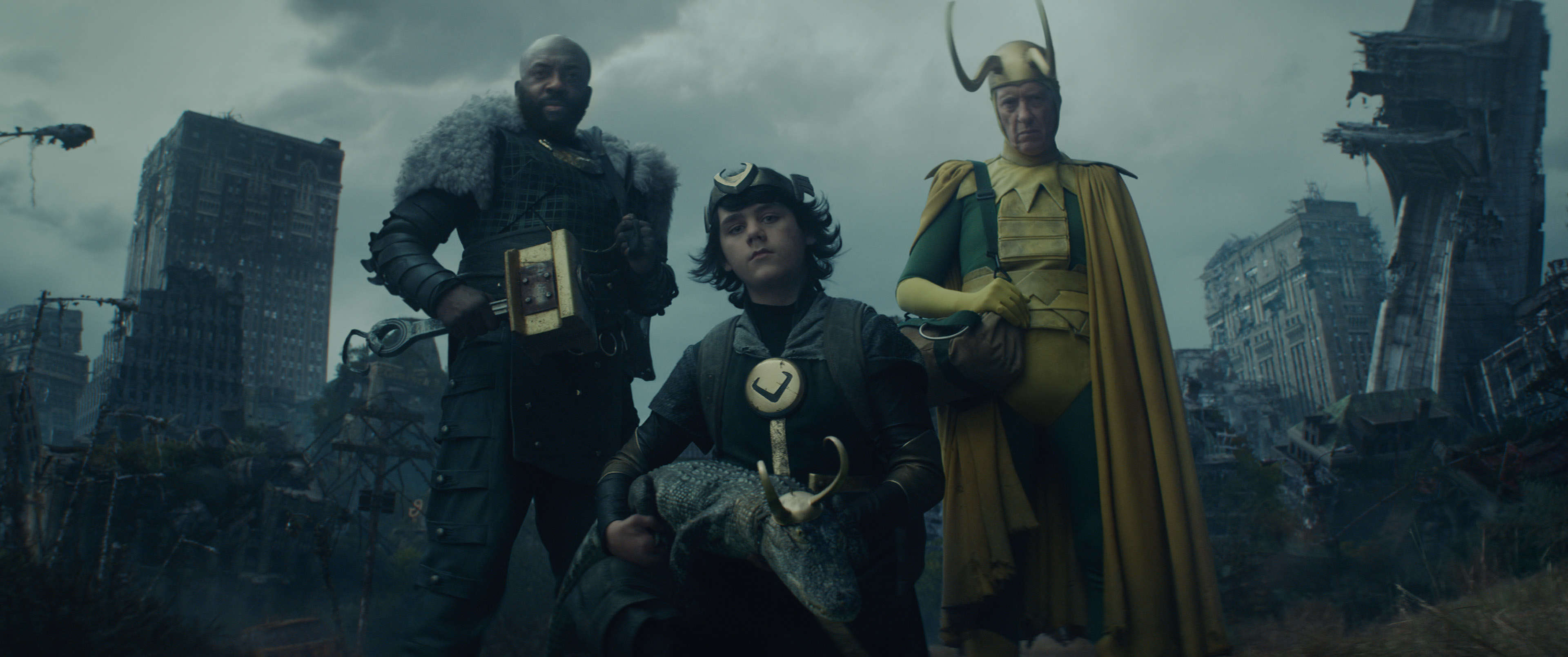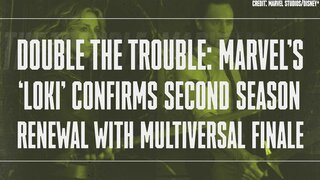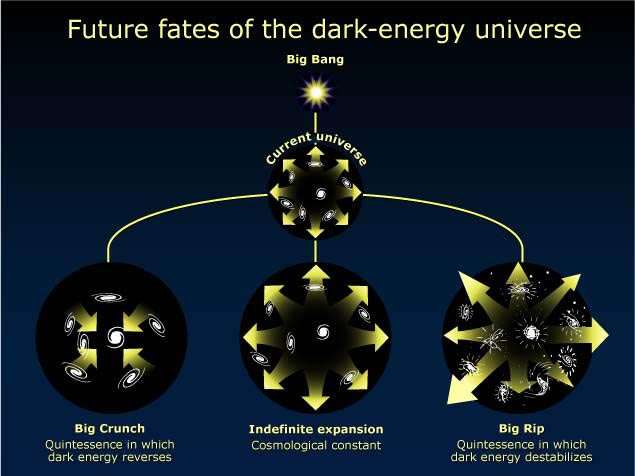Create a free profile to get unlimited access to exclusive videos, sweepstakes, and more!
The end of time on Loki featured a smoke monster, but what does science think will really happen when time runs out?

We've come to the end of Loki's first season, which just so happens to take place at the end of time. The MCU's version of the end of time, known as The Void, is a fantastical, weird, and dangerous place, but is there any truth to the idea that time runs out?
Science isn’t really into proving negatives, but whether you get there by way of TemPad or through old-fashioned waiting, it’s unlikely there’s a reality-consuming smoke dragon at the end of time. Conceptualizing what happened before time existed, or what might happen if time were to end, is not only difficult to wrap our heads around, we don’t even have good words for it. By necessity, there was no “before” time, and there can’t be an “after.” Still, all signs point to there being a first moment — could there be a last? And if so, what might it be like when we get there?
BEFORE THE BIG BANG
The answer to what happened before the Big Bang is a cosmic level shrug. Cosmic expansion tells us things are getting farther apart over time. While gravitationally local things like solar systems and galaxies stick together, overall, everything is moving away from us and at an increasing rate.
If we run that in reverse, everything must get closer together. And if we run the tape back as far as it will go, we find a universe that was infinitely small, infinitely dense, and very hot. If you think of the universe as a room, it would be as if all of your belongings were perfectly stacked into a small closet, Tetris-style.
It’s not a perfect analogy — the whole of the room would be the closet, and the closet would be an infinitely small point — but you get it. Everything is organized, there is a low state of disorder. Then, just like with clean bedrooms, things start spreading out.
Our models can’t really tell us what happened prior to that point of minimum disorder. We can’t run the tape back any further. For those of you old enough to remember VHS or cassette tapes, it’s like asking what happens before the first track, or before the FBI warning. Nothing. There is no before. Or, at the very least, the only things which can happen before, exist outside of the tape. There is the VCR and there is you at Blockbuster or Media Play. Now I’m dating myself, but we are talking about time.
Some physicists believe the answer to what happened before time might actually be something similar. One interpretation of the multiverse suggests there is a larger universe, of which what we think of as our universe is only a small part.
In this view of existence, our local universe is one bubble in a proverbial pot of boiling water. Our bubble can form, bubble for a while, and then pop. Speaking of what’s happening to the bubble itself outside of that finite range is meaningless. But there is the pot and the boiling water, before and after.
In this way, Loki's void makes sense only if it exists not at the end of time, but totally outside of it.
ENTROPY VS TIME’S ARROW
It’s commonly held that entropy — the state change from order to disorder — and the arrow of time are causally bound. It’s an understandable assumption, though not necessarily a correct one. It’s true that for the most part, physics is time-independent. The interactions of particles occur according to the same rules whether you run time forward or back. For instance, if you smack two billiard balls together and record their interaction, you could play the video forward or backward and there’s no good way to tell which direction is correct. The forces and interactions involved are the same irrespective of time’s direction.
This is true of almost all physical interactions, with the exception of weak nuclear ones. The only other physical property we see, which differs depending on chronology, is entropy. On relatively small scales things can become more ordered. Certainly, you might look at the emergence and evolution of life as increasing order over time, but on the largest scales disorder prevails.
The second law of thermodynamics spells this out for us. It says, in part, that the total energy in an enclosed system always moves toward disorder. If you pop a balloon filled with helium inside your living room, that helium will disperse until it is evenly distributed. Helium already present in a room won’t conversely collect itself into a balloon shape. That’s entropy.

Our billiard ball example doesn’t work with entropy. It moves in one direction. Play that recording in reverse and you can easily tell which is forward and which is backward. It’s this relationship with time that leads some to the belief that entropy and the arrow of time are one and the same. It makes a sort of intuitive sense but there’s not a lot of good evidence for it.
It’s difficult to test, but you could locally reverse entropy by adding energy. We could imagine a scenario in which we seek out each atom of helium in a room and place it into a container, but it wouldn’t make time flow in reverse.
Entropy and the arrow of time might be moving in the same direction but they’re more like strangers meeting on the sidewalk than they are intentional traveling companions. This becomes important when we think about the end of the universe, particularly when considering…
THE BIG CRUNCH
While this possible end of all things has fallen out of favor, it’s still in the running for ways our universe might wind down. The Big Crunch suggests a sort of reversal of the Big Bang, in which expansion doesn’t continue forever.
The main question here is one of competing forces. On one hand, we have dark energy increasing the expansion of the universe. On the other hand, we have gravity. One force pushing, the other pulling.
Today, dark energy wins out. Locally bound objects stay together, but the universe on the whole expands and distant objects become more distant. But if there were enough matter gravity could shift the scales of the cosmic tug of war.
If that happens, expansion will halt and reverse. We’ll see something similar to what we find when we wind back the tape. Distant galaxies will move toward one another, combining and coalescing. With enough time everything comes together. Stars and planets collide. Black holes combine into larger, supermassive black holes. Eventually, everything becomes one, compressing into a singularity or one very massive black hole.
After that, who knows? Maybe nothing. Maybe that’s the end, or maybe that’s the start of a new cycle. A universe in this state would be hard to distinguish from the state of the Big Bang. Some quality of massive singularities might give rise to new universes and the whole thing could start over again.
Our current understanding of the universe makes this previously popular hypothesis less likely. So far as we can tell, the expansion of the universe isn’t going to end. Instead, it will keep going spreading energy farther apart until…
HEAT DEATH
Sometimes called the Big Freeze, this is the ultimate conclusion of entropy. Every time a process happens, some of that energy is lost to heat. It’s the reason we can’t have perpetual motion machines.
That heat distributes itself throughout a given space until the temperature equalizes. Today, when stars die and spit their gasses and dust out into space, there’s often enough of it nearby that it can coalesce into new stars and planets. The cycle of an active universe goes on. But given enough time and enough expansion, this ceases to be the case.
In something like 100 billion years, the expansion will be so great that observers on a planet’s surface (not Earth, our home planet will be long gone by then) won’t be able to see beyond their galaxy or gravitationally bound local group. Everything else will be too far apart.
Later still, things will be spread so thin that when stars die, no new stars will be born. The universe will be scattered dust and gas, waste heat, and black holes. Eventually, even the black holes will evaporate.
All the while, the universe will continue expanding. What heat there is will continue toward disorder, spreading out in an ever-expanding cosmos, getting colder. At this point, the universe has reached maximum entropy.
While time will still technically exist, it might as well not. Nothing else can happen. There’s no ravenous smoke dragon, but there is a sort of tragic dismantling of existence as we know it. There’s something beautiful, though, in our ability to peer back through time and imagine the distant future. Even if it must end.
(Loki, however, isn't ending. Disney+ is bringing back the series for a second season.)





























